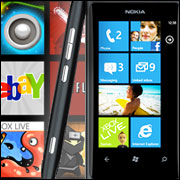
Google’s Android operating system leads the smartphone market with a majority 51.7 percent share in the United States, but competitors are gaining ground, according to a report released Monday by Kantar Worldpanel ComTech.
Apple’s iOS and Microsoft’s Windows Phone platforms are now actually surpassing Android in terms of growth rates.
Although smartphone sales have remained relatively stable this year, iOS gained 2.3 percentage points in market share, and Windows Phone rose 1.8 percentage points, while Android grew only 1.4 percentage points year on year, the report found.
For the three-month period ending April 2013, iOS remained in second place, but its share grew to 41.4 percent of smartphone sales, while Windows’ share of smartphone sales grew to 5.6 percent.
Kantar’s data comes from its USA consumer mobile phone panel, which conducts more than 240,000 interviews per year in the United States.
Tiered Pricing Strategy
“Android’s strategy has been formed around the idea of having availability across device brands and price bands, which has enabled consumers of various budgets and preferences to purchase an Android-powered device,” Mary-Ann Parlato, global insight director at Kantar WorldPanel ComTech, told the E-Commerce Times.
“With Apple rolling out further models, their predecessor models’ prices are lowered, and ultimately this means the brand now has a tiered pricing strategy across the model set, allowing greater availability across the market. This greater availability for iOS is impacting on Android,” she pointed out.
“We can see this via the top devices sold per price point. iPhone devices have begun capturing the majority of the top spots across the majority of price points.”
The Lower-End Spectrum
As for Windows, it has begun to capture consumers from across the competitor set. Forty-two percent of those who purchased a Windows device in the last year came from a feature phone device, 25 percent came from another Windows device, and 23 percent from Android, Kantar reported.
Only 31 percent of new iOS users came from a feature phone, by contrast, highlighting the relative strength of Microsoft’s OS in attracting this segment.
“They too are able to promote their devices at various price points, particularly in the lower-end spectrum, where they’re attracting feature phone users who may have previously thought to upgrade to an Android,” Parlato said.
A Younger Audience
Windows devices are beginning to attract younger consumers.
“In April 2012, the majority of those changing to a Windows device were those around ages 55-plus,” she explained. “Now, in April 2013, the people moving towards the brand are younger.”
Nokia’s Lumia devices were the key drivers behind Windows’ success over the three months ending April 2013, Kantar noted.
‘Very Early Innings’
Still, “don’t be fooled into thinking this is a long-term and sustainable lead,” industry analyst Jeff Kagan told the E-Commerce Times. “We are still in the very early innings of a long smartphone game.
“Early leaders are not guaranteed to hang onto the lead,” he added. “It’s all about innovation and growth in riding the marketing wave up.”
Kantar’s study also examined growth across carriers. Leader Verizon, for instance, exhibited a 1.8 percent increase over the past year to 36.3 percent of smartphones sold. Second-place AT&T held steady at 26.3 percent, while Sprint Nextel increased 1.4 percentage points to 13.1 percent and T-Mobile declined to 11.3 percent.
‘Crashing and Burning’
“T-Mobile has been crashing and burning over the last several years,” Kagan noted. “However, the T-Mobile of today looks very different.”
Does that mean the company can enjoy an upward path once again?
“It’s possible,” Kagan said.
“They have a new CEO. They have just acquired MetroPCS. They are now selling the Apple iPhone. They are reinventing the way they charge for services — and that is all just during the last year,” he pointed out.
“What else can we expect?” Kagan wondered. “Plenty, based on this performance to date.”






















































Social Media
See all Social Media